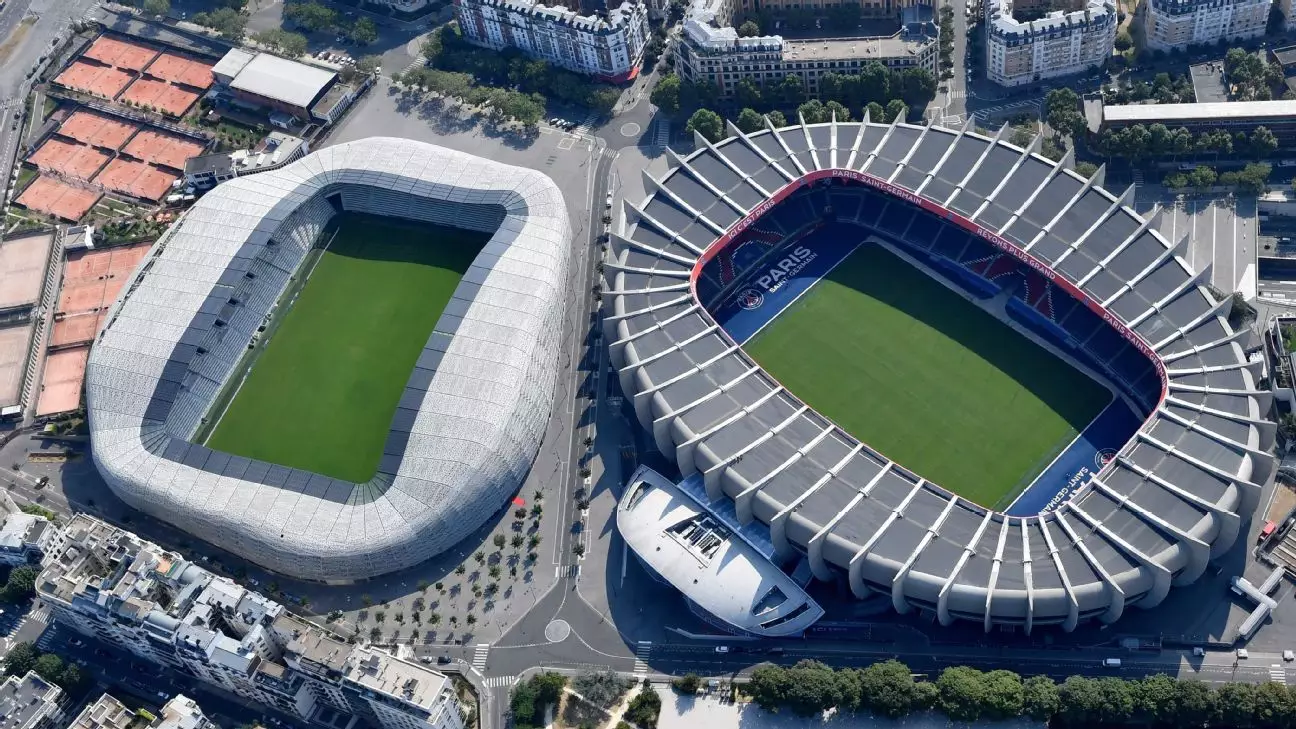The football landscape in Paris is set for a seismic shift as the reigning Ligue 1 champions, Paris Saint-Germain (PSG), prepare to welcome new neighbors, Paris FC. This arrangement, announced last week, will see both clubs playing their home games at adjacent stadiums starting from the 2025-26 season. As PSG continues to dominate French football, the ascension of Paris FC—including notable plans for stadium relocation—sets the stage for an intriguing rivalry that could reshape the dynamics of Parisian football.
Paris FC’s decision to leave the Stade Sebastien Charlety, situated approximately five miles away, stems from both strategic planning and aspirations for growth. It now plans to share the Stade Jean-Bouin, the current home of the Stade Francais rugby union team. This move reflects Paris FC’s ambition to elevate its status in Ligue 2, especially as the team sits in third position, eyeing promotion to Ligue 1.
The immediate proximity to PSG’s iconic Parc des Princes will not only increase fan engagement but also intensify the rivalry. As both clubs will play in stadiums separated by the Rue Claude Farrere, this unique setup fosters a competitive atmosphere that is visually and logistically compelling. The implications of this transition are immense: while PSG has long commanded the spotlight as a dominant force in French football, Paris FC’s relocation positions it as a legitimate contender for local recognition and support.
Paris may soon find itself at the forefront of headline football rivalry, but it begs the question—how does it compare to other teams worldwide with close quarters? When measuring the distance between rival clubs, there is a plethora of teams that occupy adjacent homesteads. For instance, the two notable West London clubs, Chelsea and Fulham, while within the same borough, have a stark cultural and competitive divide that sets them apart.
In contrast, the nearest top-flight rivals globally goes to the bustling Greek football scene, where PAOK Salonika and Iraklis Thessaloniki both boast stadiums mere blocks from each other in Thessaloniki. The same can be said across the British Isles, where Nottingham Forest and Notts County sit just across the River Trent, maintaining a unique intercity rivalry that has historically enriched English football.
The Parisian rivalry mirrors storied contests found around the globe. The fierce Avellaneda derby between Independiente and Racing Club showcases how geographical proximity can lead to persistent competition driven by decades of historical rivalry. Similarly, in Scotland, the proximity of Dundee and Dundee United gives rise to a local football fervor that is unique in the UK, with mere yards separating their stadiums.
In Sweden, Malmö FF and IFK Malmö are separated by approximately 900 feet—a distance that has bred a rivalry fueled by competitive spirit and local pride. Such examples reveal that while distance plays a role in rivalries between football clubs, the historical context and regional identity often shape the narrative.
As Paris FC prepares for its move to Stade Jean-Bouin, the potential for an all-Parisian derby adds a thrilling chapter to the story of both clubs. With PSG’s current seated dominance and Paris FC’s determination for growth, the impending clash could lead to a vibrant new chapter in Parisian football.
The shift in stadiums and the surrounding excitement resonate with fans eager for fresh competition. The landscape of French football is on the cusp of transformation, and this geographical rivalry will inevitably foster a deeper sense of identity and pride for supporters of both clubs.
The chances of Paris FC achieving promotion alongside PSG in the upcoming season are tantalizing, laying the groundwork for a much-anticipated Bernard derby that could captivate not just fans across Paris, but football enthusiasts globally. As preparations unfold for this vibrant new chapter, the enthusiasm surrounding the prospect of proximity and rivalry only intensifies, thus marking the beginning of a unique period in Parisian football history.

Leave a Reply